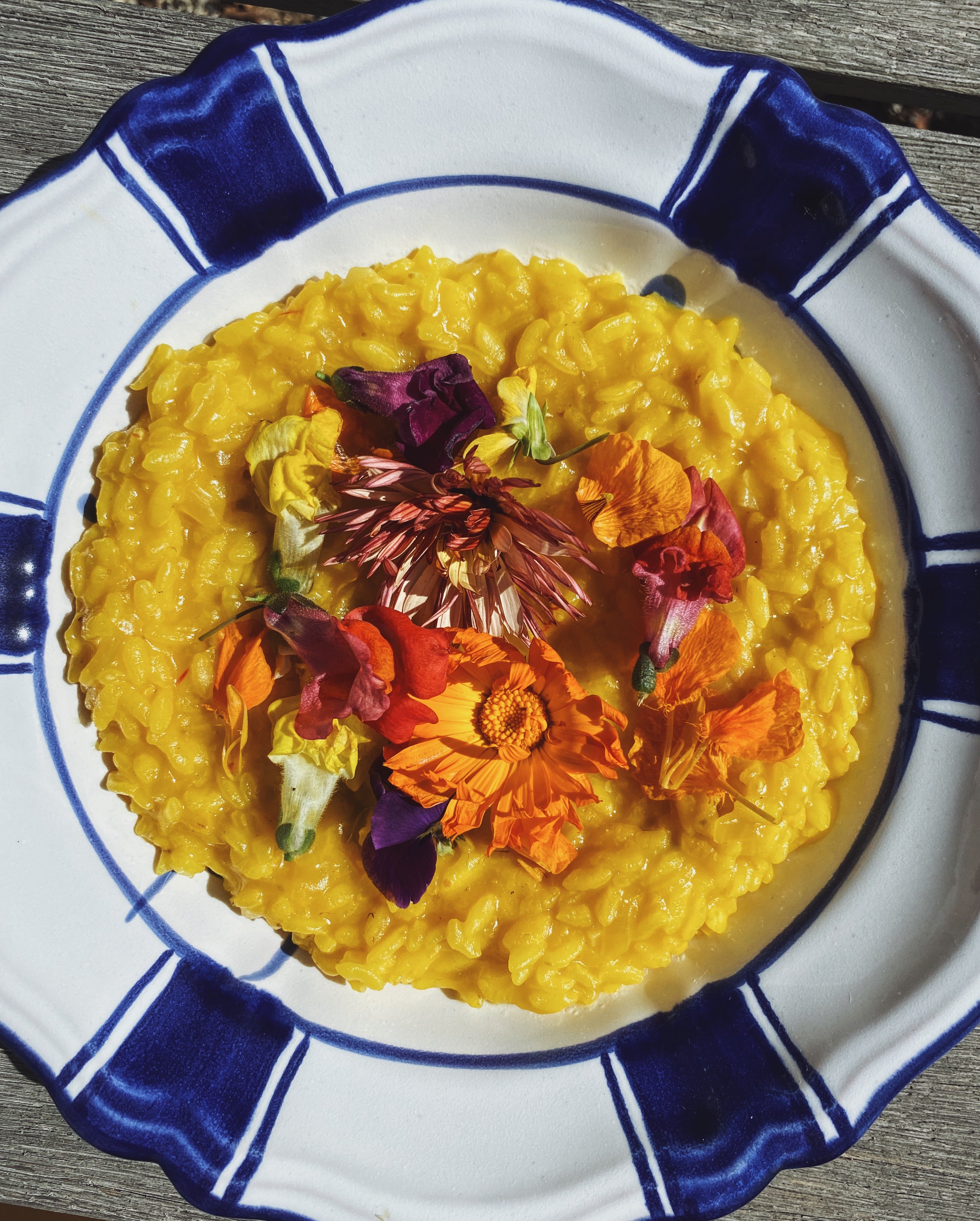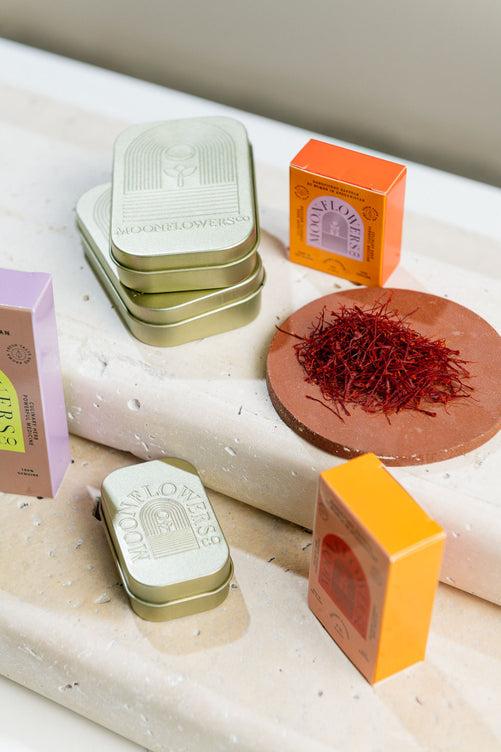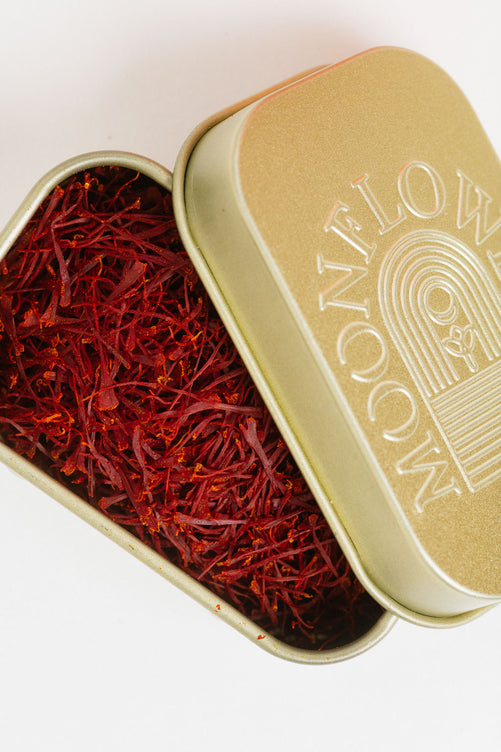recipes
Saffron Risotto alla Milanese

The saffron risotto is also known as risotto alla Milanese, named after the city of Milan in Italy. The risotto alla Milanese typifies the cooking of Milan and the province of Lombardy. The risotto alla Milanese is creamy and flavorful, without using cream in the recipe. It’s usually made with saffron, butter, meat stock, dry white wine, Parmigiano cheese, and arborio rice. The risotto alla Milanese takes about half an hour to make. It’s easy and doesn’t require a lot of ingredients, just some stirring.
Risotto is comfort food and has spread throughout Italy ever since the introduction of rice in the 13th century. The first recipes mentioning the recipe of risotto in cookbooks started in the 1800s. From the 13th to the 17th centuries people used to cook rice using only boiling water. It wasn’t up until 1779 when rice was for the first time sauteed in a little butter and wet with broth.
There are some techniques to improve the way you make your risottos.
We’ll share our favorite and easy techniques to elevate your risottos and will make you understand the process.
Stirring
When it comes to risotto rice, it’s important to keep stirring so that the rice doesn’t stick to the bottom of the pot and burn. Stirring will add air into the risotto and release the starch in the rice. The starch in the rice will generate creaminess in the risotto dish. Stir often, but don’t over stirring it because stirring constantly will add air into the risotto and cools the rice down.
Temperature
Risottos need to be cooked on low heat and this temperature needs to be preserved throughout the cooking. The rice is supposed to be simmering. When you add stock, water, vegetables or any other ingredient it will cool off what’s in the pot. It’s important to be mindful of this. When the recipe requires stock you may simmer it in another pan before adding it.
Liquids
Keep in mind to add the stock, water or any other liquid that’s needed in the recipe slowly. If you throw all the liquid at once you will just boil the rice. By adding it slowly, you help the rice slowly release it’s starch and make the risotto creamy.
What is en dente?
The phrase en dente means ‘to the tooth’ in Italian. In cooking it describes the texture of your pasta or rice when it’s tender but firm and chewy when you bite into it. En dente is the opposite of mushy and soft. Well-made risotto has body and should be en dente.
Pots
The best pot to cook risotto in is a heavy-bottomed, straight-sided skillet. Cooking risotto in a Dutch oven might be the best option to go for as long as your pot isn’t too wide for the amount of rice you’re using. The wideness of the pot matters, because when the layer of rice is too thin the rice won’t be able to release enough starch.
Other ingredients
Vegetables release a lot of water when you cook them. It’s best to cook your vegetables separately when making risotto, this will prevent your risotto from becoming too mushy or having too much liquid.
Cheese
The cheese in any risotto recipe should be added towards the end of the cooking process. The fat in the cheese breaks down when it’s too heated. The most common cheeses used in risotto are Parmesan, mozzarella, mascarpone, Gruyere, Tallegio.
INGREDIENTS
- 6 cups low-sodium chicken broth
- 3 tablespoons extra-virgin olive oil
- 2 cups uncooked Arborio rice
- 2 medium shallots, minced
- 1 cup dry white wine
- 1 teaspoon Moonflowers Co saffron threads
- 3/4 teaspoon Kosher salt
- 1/4 teaspoon black pepper
- 3 ounces Parmigiano-Reggiano cheese, finely grated (about 2 cups), plus more for garnish
- 2 tablespoons unsalted butter
DIRECTIONS
- Pour a generous amount of olive oil in your pot and turn the heat to medium. Then add your chopped shallots and salt, let it simmer over medium heat for 5 minutes. Add the rice to the pot and cook it for 4 minutes while you stir it occasionally. It’s okay to have some rice grains stick to the bottom of the pan and become a bit crispy.
- Heat up your chicken stock in a separate pan and add the saffron threads to the hot chicken stock. You may opt for grinding the saffron threads with salt to have the saffron release its flavor and color faster.
- Slowly add the wine to the risotto pan, stir continuously until the rice has absorbed the wine. This will also cause the rice to release its starch. Slowly add the saffron chicken stock to the pan until it covers the rice (but not all of it!). Cook the risotto over medium heat while you keep stirring. Let the rice absorb the stock mixture. Season with salt and black pepper.
- Keep adding the saffron stock slowly, only until it covers the rice. When the last portion of the saffron chicken stock is absorbed into the rice and the risotto seems creamy, pick a few grains of rice and bit into it to see if it’s en dente. If it’s still a little too crunchy, add more of the stock and cook it for a couple of minutes longer.
- When your rice has the perfect texture, remove it from the heat. Now you may toss in the butter, and Parmigiano-Reggiano cheese. You should stir it a lot. Your saffron risotto is ready when your rice is creamy and can hold it’s own shape.
Image by Diana Yen








